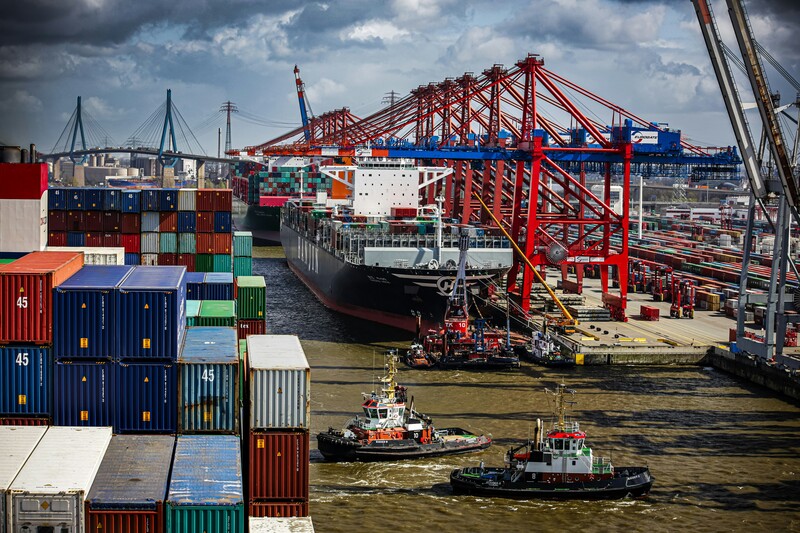Opportunism Amid Challenges
As we enter the second half of 2024, there’s an air of optimism surrounding global trade dynamics compared to earlier in the year. Yet despite this upbeat outlook, several risks may emerge that could put global trade dynamics in jeopardy: geopolitical tensions, Middle Eastern conflicts, and the Federal Reserve’s high interest rates may all pose risks that negatively impact global trade dynamics.
Global Trade Showing Signs of Recovery World trade has shown signs of recovery, with goods trading up about one per cent and services increasing 1.5% as of early 2024. Emerging markets and sectors like green energy and artificial intelligence are leading this growth. China, India, and the US all experienced notable increases in exports, which contributed positively. Meanwhile, Europe saw its export growth level off while Africa experienced a decline.
Emerging markets are becoming a more critical part of global trade, especially given China’s low production costs and supportive government policies. This development has produced more unfinished goods, components, and services exported globally.
Services Trade Experiences Difficulties
Even amid economic growth, services trade—which makes up two-thirds of global GDP—remains threatened. Geopolitical tensions and protectionist policies pose risks to its smooth flow across borders.
Market Volatility Risks Global stock markets are highly sensitive to economic shifts, which can have profound repercussions for international trade. Recent market sell-offs sparked by concerns regarding US Federal Reserve interest rate decisions and Bank of Japan monetary policy decisions have highlighted this risk; further market volatility could undermine business confidence and imperil economic stability.
Indonesia’s Future Trade Prospects
Indonesia’s trade prospects for the second half of 2024 appear cautiously optimistic. Economic growth should reach around 5.0% due to strong domestic demand and a stable macroeconomic environment; export performance remains promising despite global uncertainties and decreasing commodity prices.
Export Strengths and Challenges of Export Products
Indonesia’s exports are expected to remain resilient, particularly those in the electronics, automotive, and processed food sectors. However, falling commodity prices like palm oil and coal may impact overall revenues. Therefore, diversifying export markets and products will be key to maintaining growth.
Indonesia’s Exports and Imports 2019 – May 2024 (in US$ million)
| Trade | 2019 | 2020 | 2021 | 2022 | 2023 | May 2024 |
| Total Exports | 167,683.0 | 163,191.8 | 231,609.5 | 291,904.3 | 258,774.4 | 104,246.6 |
| Oil & Gas | 11,789.3 | 8,251.1 | 12,247.4 | 15,998.2 | 15,921.9 | 6,668.8 |
| Non-Oil & Gas | 155,893.7 | 154,940.8 | 219,362.1 | 275,906.1 | 242,852.5 | 97,577.8 |
| Total Imports | 171,275.7 | 141,568.8 | 196,190.0 | 237,447.1 | 221,886.2 | 91,190.9 |
| Oil & Gas | 21,885.3 | 14,256.8 | 25,529.1 | 40,416.4 | 35,830.5 | 14,736.9 |
| Non-Oil & Gas | 149,390.4 | 127,312.0 | 170,660.9 | 197,030.7 | 186,055.8 | 76,454.1 |
| Total Balance | -3,592.7 | 21,623.0 | 35,419.5 | 54,457.2 | 36,888.2 | 13,055.7 |
Strategic Initiative and Structural Reforms
Indonesia is working towards decreasing its dependency on traditional commodities by taking advantage of regional trade agreements like ASEAN and the Regional Comprehensive Economic Partnership (RCEP). Meanwhile, structural reforms to create an ideal business environment and digital transformation are expected to attract greater foreign direct investment (FDI) while increasing export capacities and competitiveness.
Risks and Adaptation
Potential threats to Indonesia’s trade performance include geopolitical tensions, commodity price fluctuations and global economic slowdowns. Furthermore, adapting to new environmental regulations in key markets like Europe can present unique challenges for traditional export sectors.




